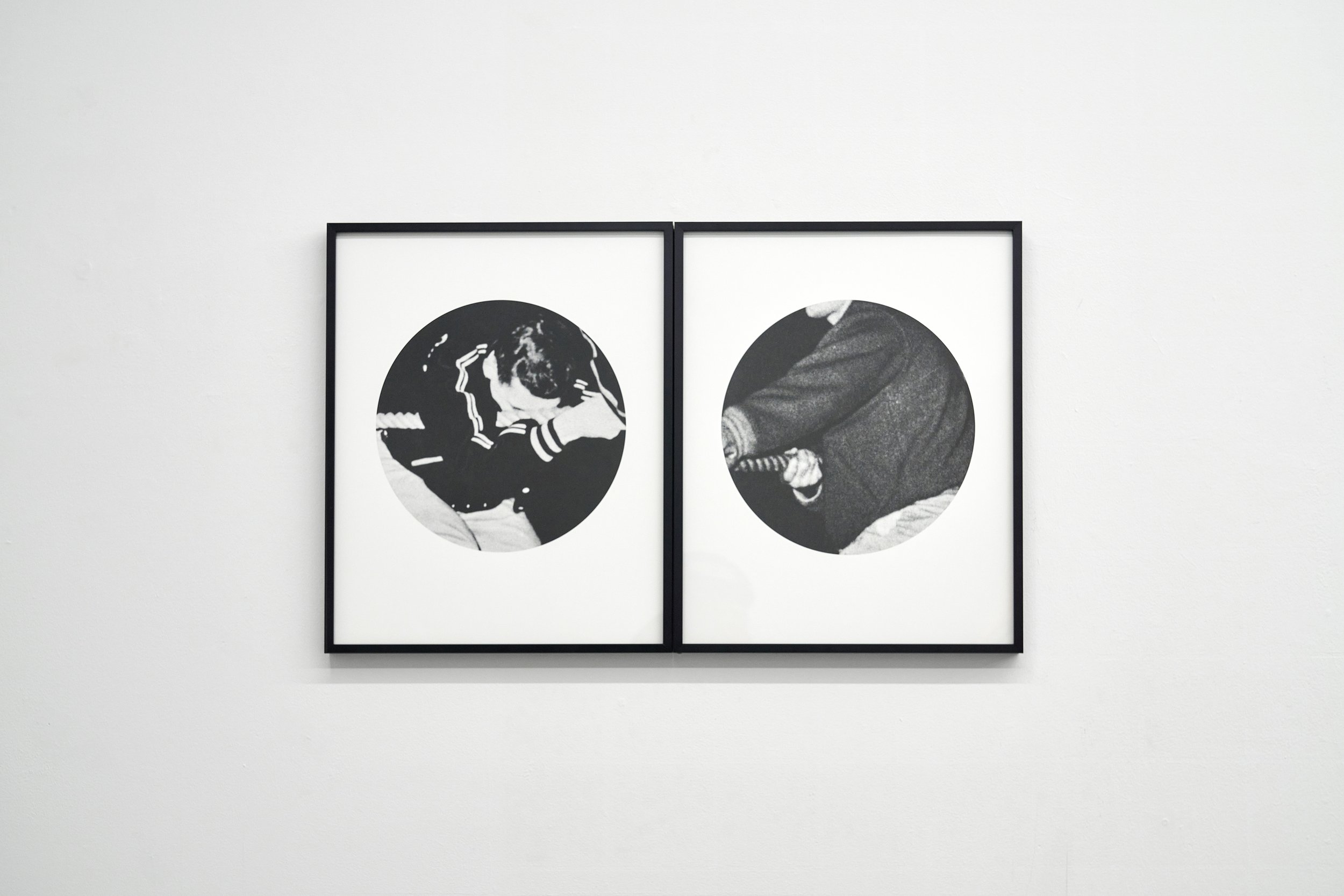Brooklyn Rail: Ryan Patrick Krueger: Documents from the Closet
In 1977, Hal Fischer unveiled the first iteration of his seminal photo-essay, “Gay Semiotics,” in San Francisco. Fischer’s project subverted structuralist frameworks of symbolism, assuming the role of the Castro district’s preeminent semiologist. Fischer surveyed the Castro locals, photographing asses spilling out of jeans, hirsute gays using nose-hair trimmers, fetishwear, and jewelry imposing the clinically drab language of semiotics onto what was once the world’s gayest neighborhood.
Nearly fifty years later, Ryan Patrick Krueger has drawn from Fischer and his contemporaries by refracting the history of masculinity through homoromantic ephemera they found on eBay. Krueger began their project, Documents in the Closet, in 2011, entering search terms like “gay interest” and “vintage gay photograph” and collecting the results. At TigerStrikesAsteroid’s Bushwick location, Krueger strings a loose narrative of tragedy around the room with their collages and sculptures. The project echoes Fischer’s experiments in sociology and anthropology through the 21st century visual language of online shopping and digital correspondence.
Ryan Patrick Krueger, For My People (Semiotics #1), 2022. Wood box, photocopies, pigment prints, newspaper clippings, act up poster, red tie, book pages, and sand, 75 x 45 inches. Courtesy Tiger Strikes Asteroid New York.
Across four wooden boxes, Krueger’s “Semiotics” series conveys a fragmented narrative, one whose linearity is thrown into question as Krueger incorporates his own digital presence. The chronology itself works backwards—in For My People (Semiotics #1) (2022), Fischer’s models are pictured in Levi’s, along with newspaper clippings of gay classified ads, and a David Wojnarowicz quote—“Killing time is killing people.” The quote invokes the terror of the 1980s when the AIDS crisis was at its height and the American government refused to act. Some of Kruger’s images obscure older photos of happy, young men embracing in military garb or dapper suits, the most tender moments lost to the cold lurch of human history.
In Dear David (Semiotics #2) (2022), Krueger pulls back that which obfuscates—the trauma of recent history. As though attempting an act of love across timelines, Krueger places his “gay interest vintage” finds from eBay along with their original listings and the attendant correspondences with Krueger. Most of the photos are similar—daguerreotypes and old negatives of two white guys in WASPy clothing, arm in arm, sometimes kissing the other on the cheek, though most of them just smile for the picture out of a necessary caution. As the “Semiotics” series continues, one encounters more diverse representations of gay people, which encourages consideration of the suppression of queer people of color within the historical record and the incredible lack of documentation regarding these communities. Krueger attempts to resolve these omissions, however one questions if Dear David doesn’t further contribute to the notion that these couples—white and WASPy—are the default perspectives of the Silent Generation’s queer community.
Ryan Patrick Krueger, Tug (Yearbook, 1961), 2023. Archival pigment print, 20 x 32 inches. Courtesy Tiger Strikes Asteroid New York.
Krueger widens the scope as the exhibition unfolds, instrumentalizing a vast queer history and personal archive to juxtapose the works of artists like Marlon Riggs and Wojnarowicz. They demonstrate the vexed relationship queer people have with American masculinity. Krueger grounds the wooden boxes with piles of black sand, reminiscent in shape to Félix González Torres’s tribute to his partner, Untitled (Portrait of Ross in L.A.)(1991), though unlike Torres’s candy mounds, these works are less mutable, dependent less on the audience’s interaction with them. Here, the piles give stability and a foundation to an otherwise unwieldy history.
Ryan Patrick Krueger’s Documents from the Closet may at times appear like bulletin boards, leaflets, and announcements that are thrown together in an almost haphazard fashion. It’s not. Krueger’s placement is insightful. Their inclusion of the diptych Tug (Year Book, 1961) (2023) with its obscured letterman jackets and anonymous figures points to a greater anguish that hides behind moments of play. Pictures fade behind flyers and in closets, thrown into a pitch black annal of history. Krueger’s work illuminates these moments, preventing them from falling into marginalia.
Contributor
Joel Danilewitz is an art writer and production assistant at the Brooklyn Rail. He lives in New York.



